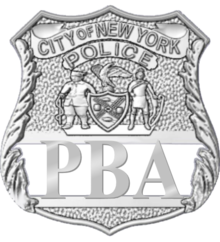
The New York City Transit Police Department was a law enforcement agency in New York City that existed from 1953 to 1995, and is currently part of the NYPD. The roots of this organization go back to 1936 when Mayor Fiorello H. La Guardia authorized the hiring of special patrolmen for the New York City Subway. These patrolmen eventually became officers of the Transit Police. In 1949, the department was officially divorced from the New York City Police Department, but was eventually fully re-integrated in 1995 as the Transit Bureau of the New York City Police Department by New York City Mayor Rudy Giuliani.
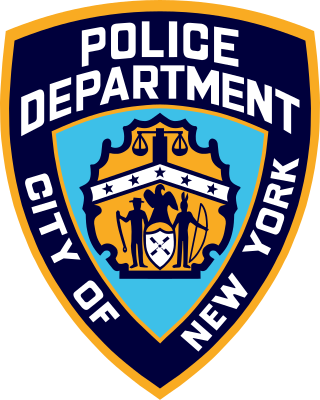
The New York City Police Department (NYPD), officially the City of New York Police Department, is the primary law enforcement agency within New York City. Established on May 23, 1845, the NYPD is the largest, and one of the oldest, municipal police departments in the United States.

David Norman Dinkins was an American politician, lawyer, and author who served as the 106th mayor of New York City from 1990 to 1993.
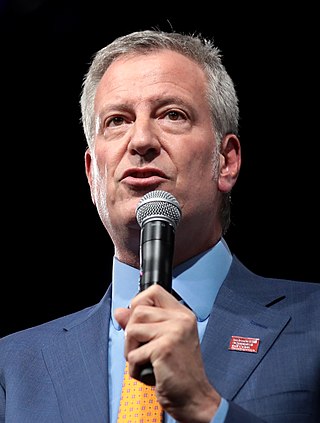
Bill de Blasio is an American politician who was the 109th mayor of New York City from 2014 to 2021. A member of the Democratic Party, he held the office of New York City Public Advocate from 2010 to 2013.
The killing of Timothy Stansbury Jr. occurred in New York City on January 24, 2004. Stansbury was an unarmed 19-year-old in New York City who was shot and killed by New York Police Department Officer Richard S. Neri Jr. Officer Neri and a partner were patrolling the rooftop of a housing project in the Bedford-Stuyvesant neighborhood of Brooklyn at about 1 a.m. Officer Neri, with his gun drawn, approached a rooftop door to check the stairway inside. Neri testified to a Brooklyn grand jury that he fired his standard Glock 19 pistol unintentionally when he was startled as Stansbury pushed open the rooftop door. Stansbury, a resident of an adjoining building, died from one shot in the chest. The grand jury found the shooting to be accidental.

The NYC Civilian Complaint Review Board (CCRB) is a civilian oversight agency with jurisdiction over the New York City Police Department (NYPD), the largest police force in the United States. A board of the Government of New York City, the CCRB is tasked with investigating, mediating and prosecuting complaints of misconduct on the part of the NYPD. Its regulations are compiled in Title 38-A of the New York City Rules.
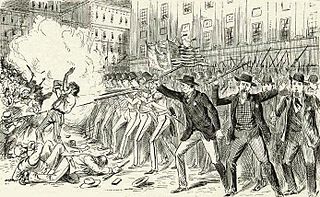
The New York City Police Department (NYPD) originates in the Government of New York City attempts to control rising crime in early- to mid-19th-century New York City. The City's reforms created a full-time professional police force modeled upon London's Metropolitan Police, itself only formed in 1829. Established in 1845, the Municipal Police replaced the inadequate night watch system which had been in place since the 17th century, when the city was founded by the Dutch as New Amsterdam.

Throughout the history of the New York City Police Department, numerous instances of corruption, misconduct, and other allegations of such, have occurred. Over 12,000 cases resulted in lawsuit settlements totaling over $400 million during a five-year period ending in 2014. In 2019, misconduct lawsuits cost the taxpayer $68,688,423, a 76 percent increase over the previous year, including about $10 million paid out to two exonerated individuals who had been falsely convicted and imprisoned.

The 1993 New York City mayoral election was held on Tuesday, November 2. Incumbent Mayor David Dinkins ran for re-election to a second term, but lost in a rematch with Republican Rudy Giuliani.
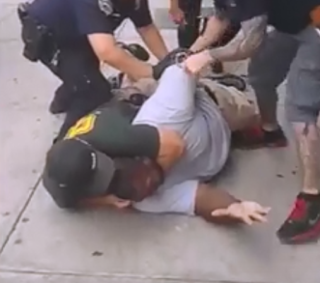
On July 17, 2014, Eric Garner, an African American man, was killed in the New York City borough of Staten Island by Daniel Pantaleo, a New York City Police Department (NYPD) officer, after the latter put him in a prohibited chokehold while arresting him. Video footage of the incident generated widespread national attention and raised questions about the use of force by law enforcement.

On December 20, 2014, Ismaaiyl Abdullah Brinsley shot and killed Rafael Ramos and Wenjian Liu — two on-duty New York City Police Department (NYPD) officers — in the Bedford–Stuyvesant neighborhood of Brooklyn. Brinsley then fled into the New York City Subway, where he killed himself. Earlier in the day, before he killed Ramos and Liu, Brinsley had shot and wounded his ex-girlfriend Shaneka Thompson in Baltimore after initially pointing the gun at his own head.
Patrick J. Lynch is a New York City Police Department officer, and the former president of its union, the Police Benevolent Association of the City of New York, which he has served for six consecutive terms in office. He retired as union president at the end of June 2023.

The Sergeants Benevolent Association(SBA) is an American police union that represents the sergeants of the New York City Police Department (NYPD), while the department's nonsupervisory patrol officers are represented by the larger Police Benevolent Association. The SBA is characterized by the Associated Press as a partisan organization, and is known for perpetually criticizing the mayor of New York City (especially recent mayor Bill de Blasio), unfavored police commissioners, and other politicians through an inflammatory Twitter account, press releases and other media statements.
Oxiris Barbot is an American pediatrician who served as the Commissioner of Health of the City of New York from 2018 to 2020. She was then appointed to public health positions with Columbia University and the JPB Foundation, and in 2022 became president and chief executive officer of the nonprofit United Hospital Fund.
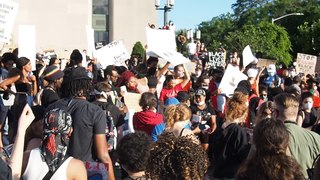
George Floyd protests in New York City took place at several sites in each of the five New York City boroughs, starting on May 28, 2020, in reaction to the murder of George Floyd. Most of the protests were peaceful, while some sites experienced protester and/or police violence, including several high-profile incidents of excessive force. Looting became a parallel issue, especially in Manhattan. As a result, and amid the COVID-19 pandemic, the city was placed under curfew from June 1–7, the first curfew in the city since 1943.

Gwen Carr is an American activist, public speaker, and author. Carr's son, Eric Garner, was killed by a New York Police Department officer who used a prohibited chokehold to arrest Garner. Since her son's death, Carr has become active in police reform in the United States, including as a member of Mothers of the Movement and a voice in the Black Lives Matter movement.
Police unions in the United States include a large number and patchwork variety of organizations. Of those unions which conduct labor negotiations on behalf of its police members, 80% are independent and have no affiliation to any larger organized labor groups. There were a reported 800,000 sworn officers in the United States as of 2017, and an estimated 75–80% of them belonged to a union.

New York City has been the site of many Black Lives Matter protests in response to incidents of police brutality and racially motivated violence against black people. The Black Lives Matter movement began as a hashtag after the shooting death of African-American teen Trayvon Martin, and became nationally recognized for street demonstrations following the 2014 deaths of two African Americans, Michael Brown and Eric Garner. Garner was killed in the Staten Island borough of New York City, leading to protests, demonstrations, and work towards changes in policing and the law. Following the murder of George Floyd in Minnesota in 2020, the global response included extensive protests in New York City, and several subsequent changes to policy.
The Patrolmen's Benevolent Association Riot, also known as the City Hall Riot, was a rally organized and sponsored by the Patrolmen's Benevolent Association of the City of New York (PBA) held on September 16, 1992, to protest mayor David Dinkins' proposal to create a civilian agency to investigate police misconduct. Approximately 4,000 NYPD officers took part in a protest that included blocking traffic on the Brooklyn Bridge and jumping over police barricades in an attempt to rush City Hall. Rioters were observed to be openly drinking, damaging cars, and physically attacking journalists from the New York Times on the scene. Rioters also chanted racial epithets towards the African-American Mayor Dinkins. The nearly 300 uniformed on-duty officers did little to control the riot.
